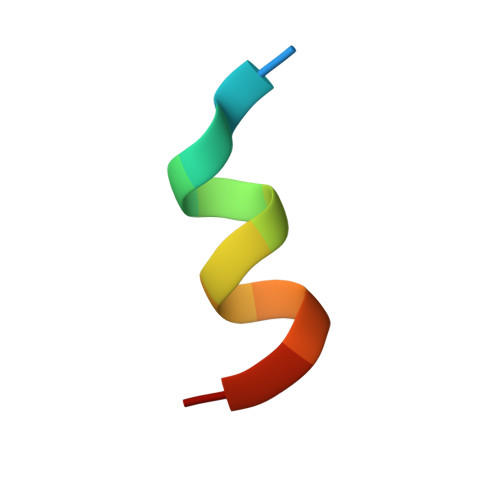Comparison of activity, structure, and dynamics of SF-1 and LRH-1 complexed with small molecule modulators.
Cato, M.L., D'Agostino, E.H., Spurlin, R.M., Flynn, A.R., Cornelison, J.L., Johnson, A.M., Fujita, R.A., Abraham, S.M., Jui, N.T., Ortlund, E.A.(2023) J Biol Chem 299: 104921-104921
- PubMed: 37328104
- DOI: https://doi.org/10.1016/j.jbc.2023.104921
- Primary Citation of Related Structures:
8DAF - PubMed Abstract:
Steroidogenic factor-1 (SF-1) is a phospholipid-sensing nuclear receptor expressed in the adrenal glands, gonads, and hypothalamus which controls steroidogenesis and metabolism. There is significant therapeutic interest in SF-1 because of its oncogenic properties in adrenocortical cancer. Synthetic modulators are attractive for targeting SF-1 for clinical and laboratory purposes due to the poor pharmaceutical properties of its native phospholipid ligands. While small molecule agonists targeting SF-1 have been synthesized, no crystal structures have been reported of SF-1 in complexes with synthetic compounds. This has prevented the establishment of structure-activity relationships that would enable better characterization of ligand-mediated activation and improvement in current chemical scaffolds. Here, we compare the effects of small molecules in SF-1 and its close homolog, liver receptor homolog-1 (LRH-1), and identify several molecules that specifically activate LRH-1. We also report the first crystal structure of SF-1 in complex with a synthetic agonist that displays low nanomolar affinity and potency for SF-1. We use this structure to explore the mechanistic basis for small molecule agonism of SF-1, especially compared to LRH-1, and uncover unique signaling pathways that drive LRH-1 specificity. Molecular dynamics simulations reveal differences in protein dynamics at the pocket mouth as well as ligand-mediated allosteric communication from this region to the coactivator binding interface. Our studies, therefore, shed important insight into the allostery driving SF-1 activity and show potential for modulation of LRH-1 over SF-1.
Organizational Affiliation:
Department of Biochemistry, Emory University School of Medicine, Atlanta, Georgia, USA.

















